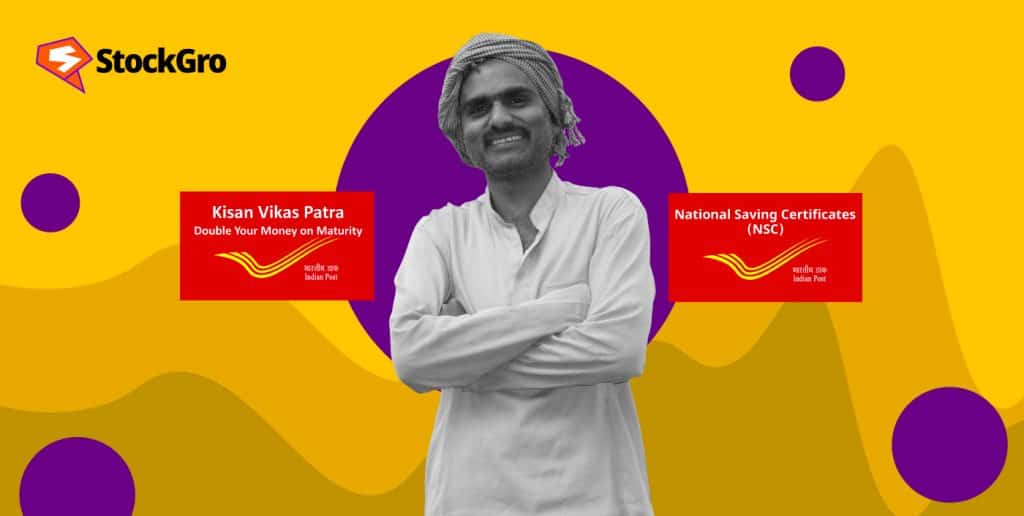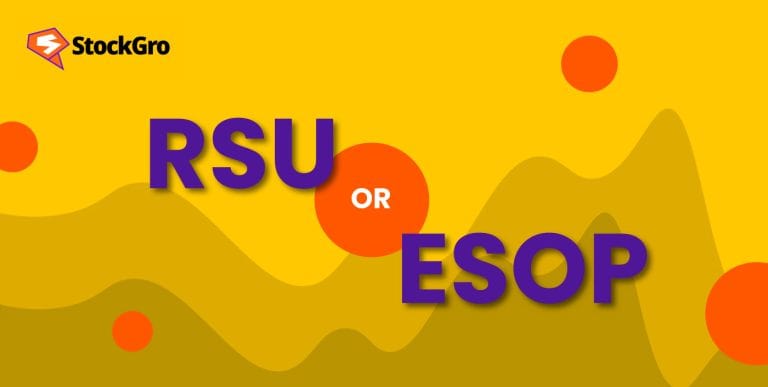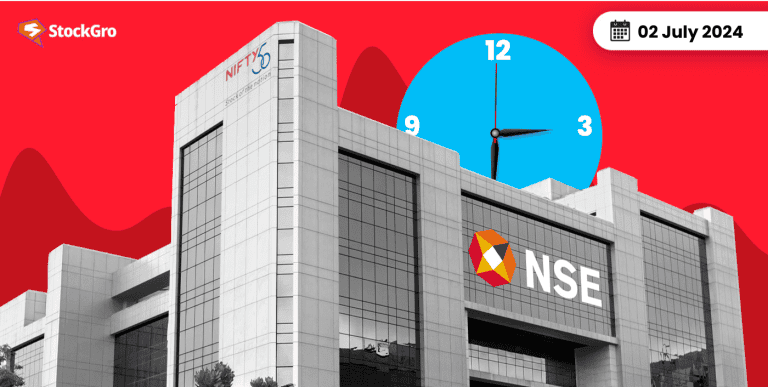
In modern times, investors can have multiple investment options. In this chaos of market volatility and returns, we as an investor may miss some great investments such as those offered by the Department of Posts, Ministry of Communication of India. These are popularly known as ‘Post Office Savings Schemes’.
There are several post office savings schemes, but the National Savings Certificate (NSC) and Kisan Vikas Patra (KVP) are the most famous. Read more to explore these opportunities.
What is a National Savings Certificate (NSC)?
The government offers a unique investment option known as a National Savings Certificate (NSC), which has the benefit of fixed income at maturity. If a person is willing to invest in small instalments starting from ₹1000, then NSC is the most secure option. Within five years, the investments cannot be claimed without certain circumstances, like the death of the account holder or forfeiture by the court or officer.
The main benefit of NSC is the tax deduction obtained under section 80C of the Income Tax Act and the compounding interest rates. Also, these instruments can be pledged for availing loans and transferred to other people.
Know more about NSC: National Savings Certificate: Eligibility, features and benefits
What is a Kisan Vikas Patra (KVP)?
The government offers Kisan Vikas Patra (KVP) to instil a basic saving behaviour in common people with small periodic investments. The KVP scheme started in 1988 for only farmers. After some years, it was available for all. In 2014, the government relaunched the KVP with some amendments in regulations, deposits and interest rates. The interest earned is compounded annually in the KVP.
There are mainly three types of KVP certificates:
- Single holder: It can be started by an adult individual, a guardian or a minor above 10 years.
- Joint ‘A’: It is accessed by three adults jointly. The amount is payable to both holders jointly or the survivors.
- Joint ‘B’: It can be opened up to 3 adults jointly. The amount is payable to either of the survivors.
Along with NSC and KVP, the investment in public provident fund (PPF) is also famous for its periodic deposits scheme.
The debate is: NSC vs KVP vs PPF
| Particulars | National Savings Certificate (NSC) | Kisan Vikas Patra (KVP) | Public Provident Fund (PPF) |
| Eligibility | Individual adult, minor above 10 years, guardian, joint account (3 adults) | Individual adult, minor above 10 years, guardian, joint account (3 adults) | Individual adult, guardian |
| Minimum investment | ₹1000/- and thereon in multiple of ₹100/- | ₹1000/- and thereon in multiple of ₹100/- | Lump-sum or Instalment of ₹500/- to ₹1.5 lakh per annum. |
| No. of accounts | No limit | No limit | Only 1 |
| Maturity | 5 years | Not fixed | 15 years |
| Interest rates | 7.7% compounded yearly | 7.5% compounded yearly | 7.1% compounded yearly |
| Early exit | Only in case of some prescribed conditions | After a minimum of 2.5 years from deposit. | Up to 50% of credit withdrawal in the fifth year from deposit. |
| Taxation benefit | Deduction under 80C of the Income Tax Act. | No benefit | Deduction under 80C of the Income Tax Act. |
Source: Post Office Savings Schemes
Read more: Mutual Funds Vs Post Office Schemes.
The NSC vs KVP calculator
The calculation of returns would present an appropriate picture of how investments grow over the years in both instruments.
(Note: Below represented is a hypothetical illustration)
| National Savings Certificate (NSC) | Kisan Vikas Patra (KVP) | |
| Amount invested | ₹10,000/- | ₹10,000/- |
| Interest rate | 7.7% Compound Interest | 7.5% Compound Interest |
| Tenure | 5 years | Not Specified (Calculation for 5 years to compare with NSC returns) |
| Amount at the tenure end | Approx ₹14,490/- | Approx ₹14,356/- |
Also, read about: Mahila Samman Savings Certificate – MSSC Interest Rate for Women.
Bottomline
The National Savings Certificate (NSC) and Kisan Vikas Patra (KVP) provide a great opportunity to investors for disciplined small savings. These both offer nearly similar returns with compound interest in the same period.
So, in the debate of investments NSC vs KVP which is better?
NSC offers better returns but has a compulsory lock period of 5 years. KVP offers early exit after 2.5 years. As per the investor’s liquidity requirements and aspirations for returns, the investor can select between them. The objective and horizon of the investment should be clear to the investor while investing.
Make data-driven decisions with in-depth technical stock market analysis app. Master market trends with StockGro app now!FAQ
Q1. Is NSC or KVP better?
The National Savings Certificate (NSC) and Kisan Vikas Patra (KVP) are both post office savings schemes. The NSC has more interest % and tax benefits but locks the investment for 5 years. The KVP has the facility of early withdrawal after 2.5 years. So, the investment suitable or better would be decided, as per the investor’s objective of investment.
Q2. Does NSC double in 5 years?
The investment in NSC offers an interest rate of 7.7% compounded annually. So, the investment would not double in 5 years. It would need a minimum of nine years and four months for investment to double with this interest rate. However, NSC deposits offer a tax deduction as per section 80C of the Income Tax Act.
Q3. Is NSC taxable at maturity?
The compound interest of NSC after maturity would be taxable as the interest under the ‘Income from other sources’ as it is not reinvested. In 4 years before the maturity, the interest earned is deductible as per section 80C of the Income Tax Act as that interest is reinvested in the security.
Q4. Is KVP taxable at maturity?
The KVP doesn’t offer any taxation benefits to its investors. After the maturity of KVP, a 10% tax deducted at source (TDS) benefit is available on the interest. The interest earned in KVP is taxable under the head- ‘Income from other sources’.
Q5. What happens to KVP after maturity?
The Kisan Vikas Patra (KVP) doesn’t have a fixed maturity. Investors can claim it after a minimum of 2.5years. The interest on KVP is taxable under ‘Income from other sources’. After the maturity, a 10% TDS can be subtracted from the proceeds of interest on KVP.

